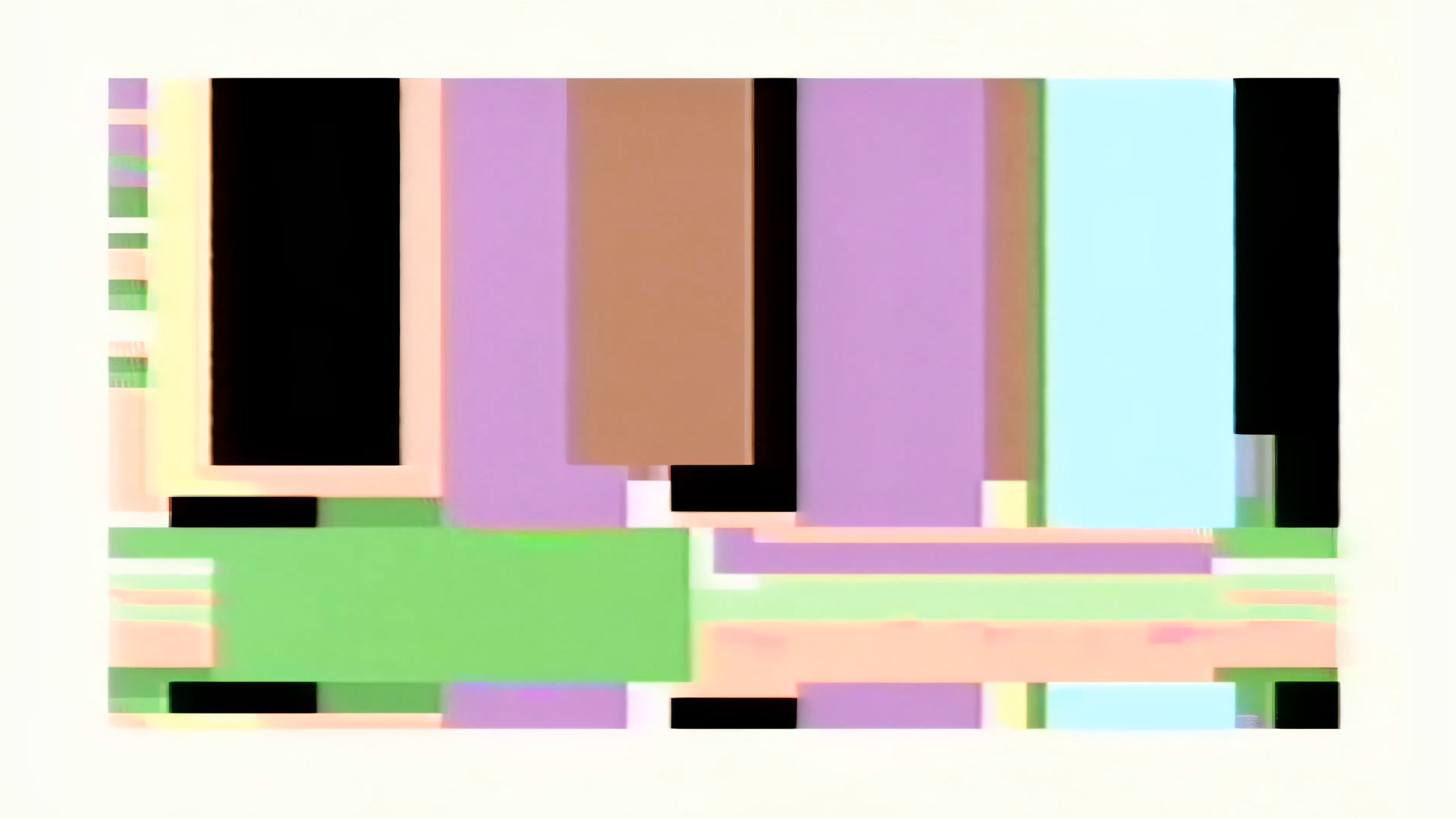HERBERT W. FRANKE | BERLIN & LOS ANGELES
4-30 OCTOBER 2023 | SHOWROOM
HERBERT W. FRANKE: ZENTRUM
EXPANDED.ART, PROOF, and Foundation Herbert W. Franke are proud to present ZENTRUM, a historical work created in 1982 by computer art pioneer, scientist, and science fiction writer Herbert W. Franke.
ZENTRUM is a dynamic, endlessly running abstract animation made of structural elements and random codes. The random generator ensures that each endless loop is unique, and is made with Franke’s original code from 1982. Prior to his passing in 2022, Franke was actively working to bring this code on-chain. Aaron Penne, artist and director of engineering at Art Blocks, wrote the code for today's software and hardware in conversation with Susanne Päch, wife of Herbert W. Franke. She supported Franke with feedback when he coded ZENTRUM.
ZENTRUM is proof that Franke was a visionary who recognized early on the inexhaustible potential of computers and technology for art. In the early 1980s he began writing computer programs himself, which opened a new chapter in the history of art. His goal was to transform images of abstract art, which were statically designed, for example, by Kandinsky and Mondrian, into real-time dynamics. After the dynamic program MONDRIAN (1979, Le Random Collection), ZENTRUM is one of his first works of early computer art: a dynamic, endlessly running abstract animation made of structural elements and random codes. It was clear to him that such systems were still in their infancy and that their great potential would only be revealed in the future.
Unlike other artists who continued to like to plot pictures to hang on the wall, which also corresponded to the conventional idea of art, Franke saw other dimensions in computers, which he had already envisioned in his 1957 book ART AND CONSTRUCTION. He saw the glowing screen as the goal of the presentation.
For ZENTRUM, Franke had to make do with the limited computing capacity that a home computer offered at the time. Despite this limitation, it was important to him to develop moving sequences even in his first programs for the Apple II. He considered the movement to be a pioneering digital innovation. The combination of dynamic image sequences and music, as well as the interactivity, were already groundbreaking in his MONDRIAN program code, developed in 1979 for the Texas Instruments home computer.
In a manuscript from 1984, an article for one of the earliest home computer magazines, Franke looks to the future: "Certainly not everything that is created with the help of computer programs has artistic value, but why shouldn't these simple beginnings one day create something that is on a par with the great works of painting?" Franke was clear that such PC programs were the beginning of a far-reaching development for art in the future. He wanted to be actively involved in a development that would open up this potential for art.
Franke used a television at the time because he didn't have an Apple monitor. He didn't know that you couldn't change the contrast of the colors on an Apple monitor. The colors would have been very saturated on the Apple monitor. He himself worked with a television on which he could adjust the contrast. His color world of ZENTRUM is documented using historical video clips and photos. Aaron Penne worked with these recordings, adopted the colors in the adapted code, and simulated the aesthetics of the surface of a CRT monitor.
Part of the proceeds from the NFT drop ZENTRUM will be used by the Foundation Herbert W. Franke to organize and host an international symposium on the history of generative art in Berlin in May 2024. Another part of the proceeds will flow into the eBook publishing of the science fiction edition of Franke, which is also planned for 2024.
ZENTRUM will be minted as an exponential Dutch Auction with rebate powered by Art Blocks Engine. The auction is open to the public, meaning a PROOF account is not required. The Dutch Auction will begin at 5 ETH and the resting price will be 0.5 ETH. Collectors will be rebated on the final settlement price, meaning all collectors will pay the same price to mint. The first ten collectors may claim a fine art physical print of their ZENTRUM output with EXPANDED.ART.
There are a total of 200 NFTs available in the public sale. 22 NFTs will be minted to EXPANDED.ART, the PROOF treasury, and Foundation Herbert W. Franke. The Foundation will donate their NFTs to museums and cultural institutions.
Public Dutch Auction: 21 November 2023 | 6 PM CET | proof.xyz
HERBERT W. FRANKE: ZENTRUM
4-30 OCTOBER 2023
OPENING: 4 OCTOBER | 6-9 PM CET
Susanne Päch, wife of Herbert W. Franke, will be present.
EXPANDED.ART
Friedrichstraße 67, 10117 Berlin
Monday - Saturday: 11 AM - 6 PM CET
WHAT IS A DUTCH AUCTION?
A Dutch auction is when the price decreases over time during an auction. In an exponential Dutch auction, the price is automatically lowered in a mathematically predetermined time. Mints can be placed any time, and the price will continue to decrease until all NFTs are sold. All purchasers will be rebated to pay the same settlement price.
For example, if a collector mints a piece at 4 ETH, and the final NFT is minted for 1 ETH, they will be rebated 3 ETH to match the lowest price.
HOW DOES THE REBATE WORK?
Collectors will receive their auction rebates at the conclusion of the auction, once all NFTs have been minted and the final settlement price is reached.




CONVERSATION: PIONEERS AND THEIR LEGACY
Read More"It's the idea that counts. Two things have to come together in art: the idea and the technique. The computer takes the technique off of us, so we can concentrate on the idea."
– Herbert W. Franke























